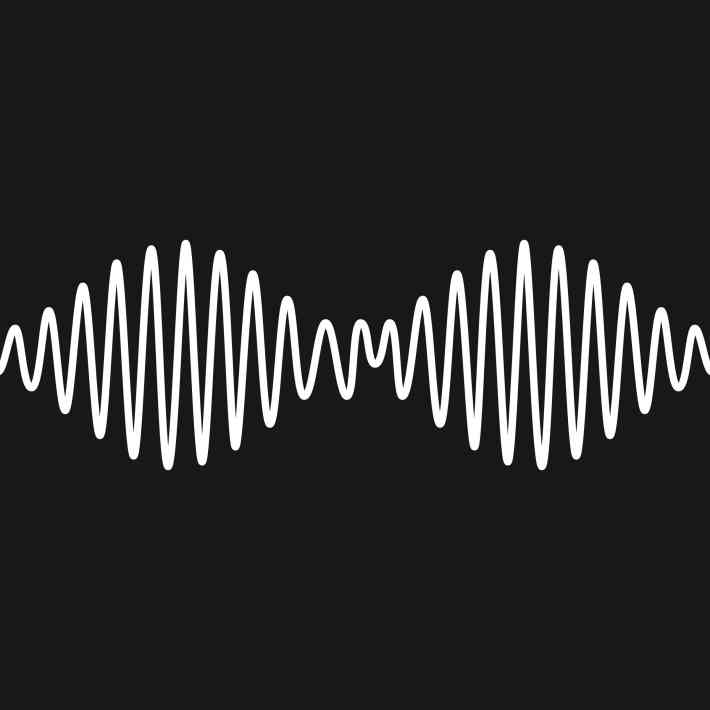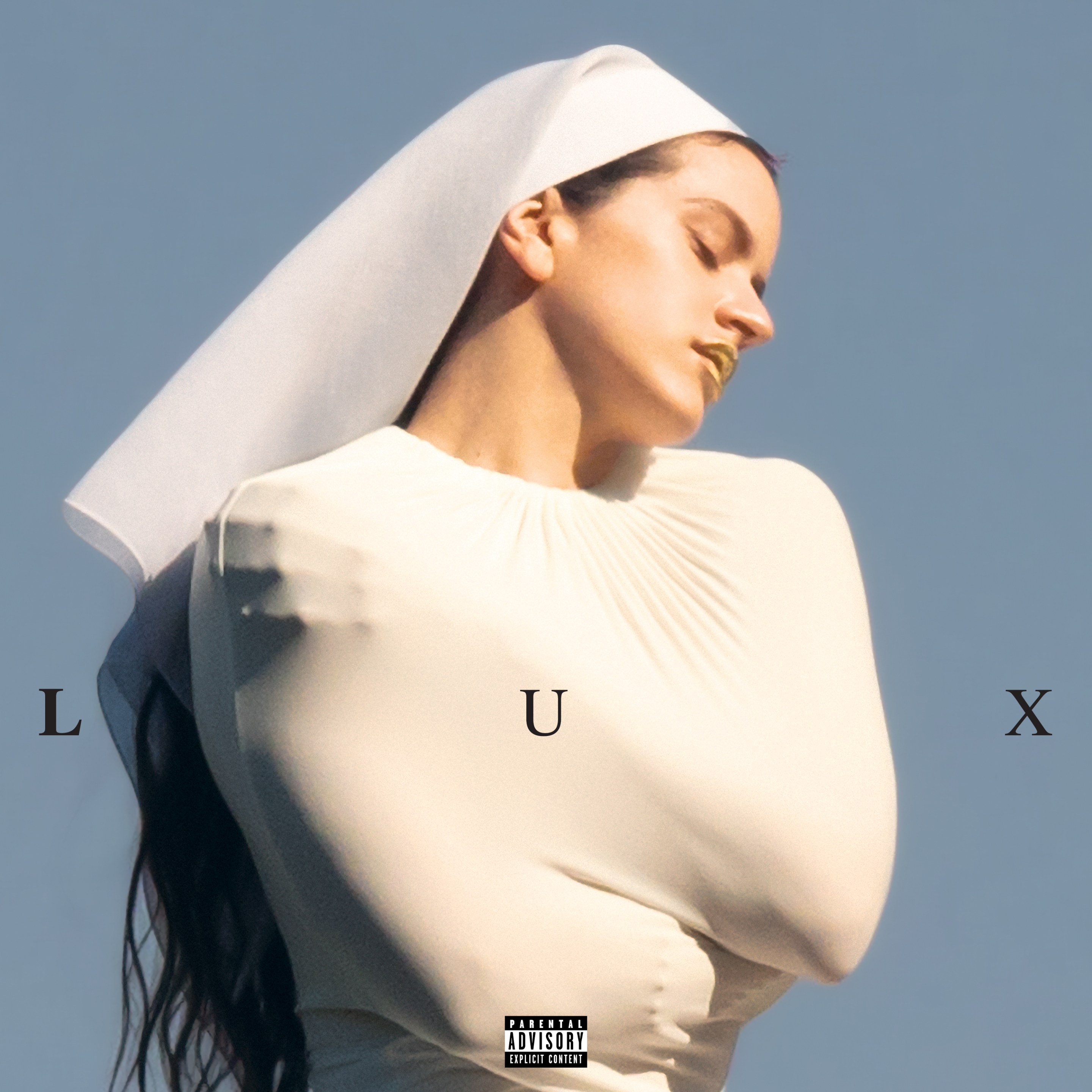- Domino
- 2013
It was a self-coronation. In hindsight, the letters of AM loomed large over a new era for Arctic Monkeys. A pseudo-self-titled fifth album, shortened from quirky moniker to sophisticated initials. The name was left open-ended, so that it could mean a few things. In a 2013 conversation with Interview, Alex Turner allowed that the journalist's assertions — it could be radio frequency, the verb "am," or the time of day — could all be true. But however they meant it or whatever people said they were (this time), it didn't matter. AM was a bold announcement. When it arrived 10 years ago this Saturday, AM took the Monkeys from popular, established rock band to superstardom.
From the start, Turner and his compatriots — guitarist Jamie Cook, bassist Nick O'Malley, and drummer Matt Helders — were a sensation. After stirring up internet buzz in the early '00s, the quartet (then still featuring original bassist Andy Nicholson) released their debut Whatever People Say I Am, That's What I'm Not in 2006. It became the fastest-selling debut in the history of the English charts, the band's unabashed portraits of Northern life and spiky, effusive music establishing them as not only the UK's answer to the Strokes, but the torch-bearers for a new generation of Brit-rock. They built a quick one-two, following the debut with Favourite Worst Nightmare the next year. Then things began to mutate. Teaming with Josh Homme on 2009's Humbug yielded headlines about Black Sabbath riffs and moodier stoner-rock atmosphere. Right on the heels of his soundtrack EP accompanying Richard Ayoade's film Submarine, Turner redirected his main gig in a shimmery, jangly guitar-pop direction for 2011's Suck It And See. All the while, the band remained beloved, acclaimed. All of which is to say, Arctic Monkeys weren't exactly in need of an ascension. But then came AM, their own delineation between a B.C. and an A.D.
At this point, the pivots of Humbug and Suck It And See had made it custom for Arctic Monkeys to change the script from album to album. AM marked their biggest leap yet. Maybe the name alluded to classic rock stylings, maybe it signaled a rebranding. But in the simplicity of its design (including a waveform cover that felt instantly iconic) and the undeniable power of its melodies, the whole thing translated to: Boom, here are Arctic Monkeys as arena-rock conquerors.
For AM, the Monkeys cited influence from hip-hop. As is often the case with rock bands, this basically meant the beats were forceful and the grooves pronounced. They were back to favoring riffs that were all '70s classic rock crunch with a modern sheen, like they had picked something up from recent tourmates the Black Keys (then on their own implausible breakthrough moment behind El Camino). Their old pal Homme showed up one night to drink tequila and provide background vocals on two tracks, and you can hear a bit more of Queens Of The Stone Age's leather jacket sleaze on AM than Humbug, the one Homme actually produced. But at the same time, Turner's claims of taking inspiration from R&B rang true. The band seamlessly wove this big, swaggering rock sound with sinuous, deeply catchy melodies that mostly downplayed Turner's penchant for crowded lyrics and furious cadences. The streamlined, optimized version of the Arctics' sound remains striking to this day.
Arctic Monkeys already had an enviable supply of hits in their back pocket, but nothing had been so "pop" as AM. Intentionally departing from the lean, band-in-the-room approach of Suck It And See, the quartet embraced production gloss and studio augmentation. They went from no overdubs to an album that built its monolithic style off plenty of subtle little affectations. Yet this didn't mean Arctic Monkeys had gone for a purely anthemic mainstream crossover moment. AM slinked and slithered where much of their past music had raged and surged. It was more digestible for listeners who might not have an affinity for the hyper-British colloquialisms of earlier Monkeys, but at the same time, there was also something eerie in AM’s sexiness.
Turner had been no stranger to cataloguing nightlife and romantic travails, but reviewers regularly noted a bugged-out, anxious tone to the wee-hours musings across the album — the interpretation of AM as a timestamp clearly denoting the bleary final hours of the night, not a wholesome early awakening for sunrise. There are trysts and one-night stands; at the time, one SPIN interview drew a parallel between tracks "Why'd You Only Call Me When Your High?" and the sad hookup Drake of Take Care. Though he was still only in his late twenties, 10 years in the game had made Turner a bit world-weary: "No. 1 Party Anthem" was the sort of ragged inversion of past hedonistic glories that sounded like an aimless solo walk home as dawn threatens the horizon.
Many of AM’s rockers followed similar formulae. You had a few breakneck moments like "R U Mine?" but otherwise tracks like "Arabella" and "One For The Road" balanced seductive, pinprick guitar verses with heaving choruses. While Turner was already lionized for his sharp songwriting chops, he came armed to the teeth for AM. Songs like "Knee Socks" were little magic tricks, seamlessly gliding from one unshakable melody into another that you'd never, ever be able to get out of your head. "Do I Wanna Know?" was the perfect opener: building just a bit of drama, introducing the album's tropes, giving you one of its biggest songs before just hitting you, over and over, with endless hooks.
While Arctic Monkeys had significant notoriety in America before AM, they also talked about how their endless touring there seemed to finally put them on the brink of something greater. They knew they had the chance to break here in a different way. So after a certain level of indie fame, they became true rock stars Stateside. Those AM singles had a kind of ubiquity: They weren't actual radio hits but just seemed to be everywhere in the atmosphere. Just as early singles shared via MySpace spurred the Monkeys' early days hype in England, so too did the Tumblr era introduce them to a new generation of listeners. It probably helped that their signifiers were less idiosyncratically British. Ahead of AM, you could catch an NME article wringing hands over whether the Monkeys had lost touch with their roots. Maybe they did. They were no longer just an important British band. They toured AM heavily, the songs lingered and never got old, and they became one of the rare truly massive rock bands of their generation.
The band had been prolific, churning out five albums in seven years, covering a ton of ground and steadily growing bigger along the way. Then, after AM, everything changed. There was a yawning five-year gap until they finally returned with a followup, 2018's Tranquility Base Hotel & Casino. Rather than further any pop ambitions, Tranquility Base immediately entered the canon of weirdo fame-freakout albums. "I just wanted to be one of the Strokes/ Now look at the mess you made me make," Turner sang in its opening lines, introducing a concept album about a resort on the moon. Another four-year wait unfolded until The Car arrived last fall. It doubled down on the Monkeys' restlessness and refusal to duplicate the accessibility of AM. Thus far it's done little to dull their stature; they're currently touring arenas around America. But for now it seems clear Turner lost interest in world domination, and instead the Monkeys have entered a strange, wandering baroque era.
Lacking in the more direct pleasures of earlier Arctic Monkeys yet still witty and rich, those latter albums can be divisive amongst the long-time devoted. Anecdotally, so is AM — my friends overseas pine for the younger, rangier Arctic Monkeys they saw themselves in. Early on, Turner made it clear the band wouldn't settle anywhere for too long. Now 10 years on but only two albums later, the Arctic Monkeys of AM seem like they might as well exist on the moon, too. It may still act as a line in the sand, from the simpler days of youthful exploration to the more tangled and haunted thirty-something Arctic Monkeys. Yet now it's clear the album was a harbinger of big changes in Arctic Monkeys' overarching narrative, but no indication of where they would go next musically. It lives on as a weird, loud blip casting a long shadow over its successors. But with a band as unpredictable as Arctic Monkeys have become, who knows — maybe they'll reach for the crown again someday.
We rely on reader subscriptions to deliver articles like the one you're reading. Become a member and help support independent media!







